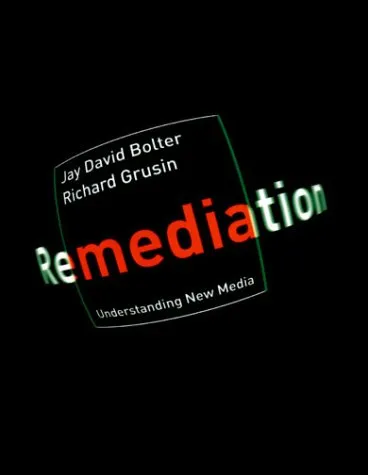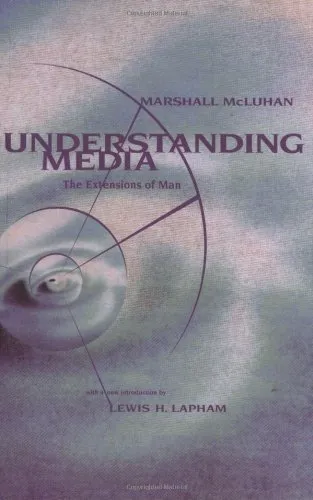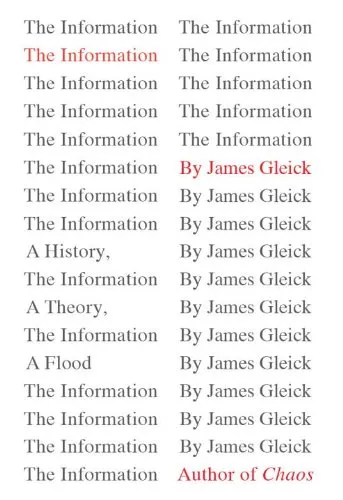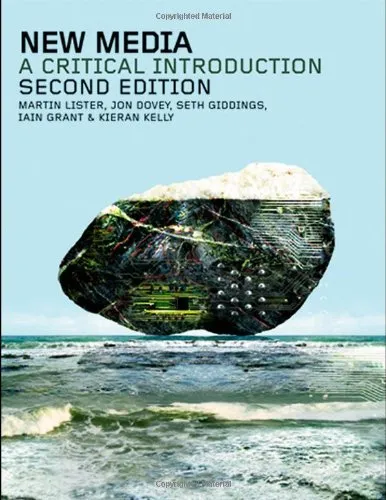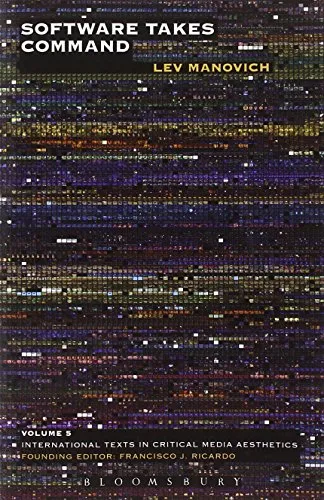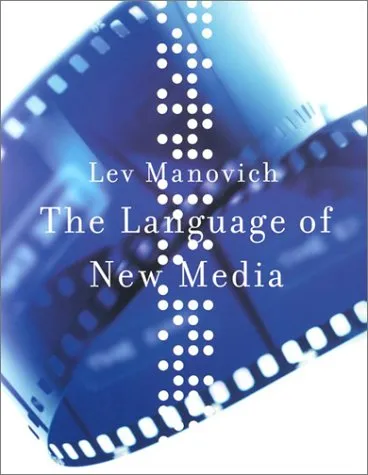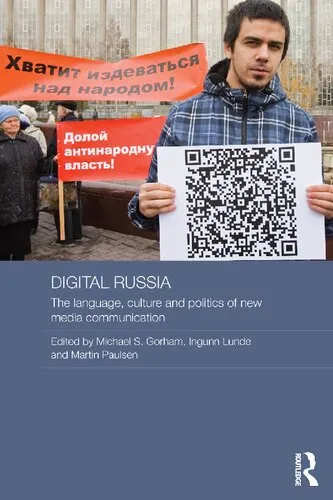Remediation: understanding new media
4.5
بر اساس نظر کاربران

شما میتونید سوالاتتون در باره کتاب رو از هوش مصنوعیش بعد از ورود بپرسید
هر دانلود یا پرسش از هوش مصنوعی 2 امتیاز لازم دارد، برای بدست آوردن امتیاز رایگان، به صفحه ی راهنمای امتیازات سر بزنید و یک سری کار ارزشمند انجام بدینکتاب های مرتبط:
معرفی کتاب 'Remediation: Understanding New Media'
کتاب 'Remediation: Understanding New Media' اثر مشترک جِی دیوید بولتر و ریچارد گرِوسین، یکی از آثار پژوهشی مهم در حوزه رسانههای جدید است که به بررسی مفهوم پیچیده و در حال تغییر media در دنیای دیجیتال معاصر میپردازد.
خلاصهای جامع از کتاب
این کتاب به کاوش در مفهوم Remediation میپردازد، که فرآیندی است که در آن رسانههای جدید، رسانههای قدیمی را بازسازی و بازتعریف میکنند. بولتر و گرِوسین معتقدند که رسانههای دیجیتال همواره در حال تغییر و تطابق با تکنولوژیهای جدید هستند و در این روند، همواره به نوعی تعامل و تبادل با رسانههای سنتی دارند.
Remediation به معنای ترکیب و ادغام رسانههای مختلف به گونهای است که ویژگیهای هر دو را در خود جای دهد. این کتاب به تحلیل ارتباط پیچیده بین رسانههای جدید و قدیم، و چگونه این رسانهها در تعامل با یکدیگر به خلق تجربههای جدید میپردازند.
نکات کلیدی
- آشنایی با مفهوم Remediation و تاثیر آن بر رسانههای جدید و قدیمی.
- بحث در مورد چگونگی توانایی رسانههای دیجیتال برای بازتعریف و بازسازی رسانههای سنتی.
- بررسی نقش فرهنگی و اجتماعی رسانهها و تأثیری که تکنولوژی بر این نقش دارد.
- تحلیل مثالهای عملی از رسانههای مختلف و چگونگی تعامل آنها.
جملات معروف از کتاب
"Remediation is the process by which new media technologies improve upon or remedy the limitations of old media."
"The logic of Remediation dictates that media should appropriately refashion or rehabilitate themselves."
چرا این کتاب مهم است
کتاب 'Remediation: Understanding New Media' به دلیل تحلیلهای عمیق و کاربردی که ارائه میکند، به یک منبع مهم برای محققان و دانشجویان حوزه رسانههای جدید و تکنولوژی تبدیل شده است. این کتاب به سوالات مهمی درباره چگونگی تاثیر تکنولوژی بر رسانهها و جامعه پاسخ میدهد و به روشن شدن راههای نوآوری و توسعه در این حوزه کمک شایانی میکند.
همچنین، این کتاب ماهیت پویای رسانهها را برجسته کرده و به خوانندگان نشان میدهد که چگونه باید در مقابل تغییرات سریع تکنولوژیکی واکنش نشان دهند و از فرصتی که این تغییرات فراهم میکنند بهرهبرداری کنند.
Introduction to 'Remediation: Understanding New Media'
Published in 1999, 'Remediation: Understanding New Media' by Jay David Bolter and Richard Grusin explores the fascinating interplay between old and new media. The concept of 'remediation' provides a lens through which we can understand how emerging media forms evolve by incorporating, refashioning, and responding to their predecessors.
Detailed Summary of the Book
At the core of 'Remediation: Understanding New Media' is the idea that media technologies are interconnected and that newer forms often refashion older ones. Bolter and Grusin posit that new media does not replace old media entirely but instead reimagines and redefines it. This process, which they term 'remediation,' is characterized by the dual logic of immediacy and hypermediacy. Immediacy strives to make the viewer forget the presence of the medium to create a seamless experience, while hypermediacy multiplies representations to remind the viewer of the medium.
The text delves into historical instances of remediation, providing examples from the Renaissance to the digital age to underscore that this pattern is deeply rooted in the media landscape. Through these case studies, Bolter and Grusin demonstrate that each emergent media form takes something from the past, reformulating previous media into its structure, style, and function. The relevance of the book's exploration is found in its analysis of digital technologies, such as virtual reality, computer graphics, and the Internet, which were in earlier stages of development at the time of writing. The authors illustrate how these technologies exemplify remediation by integrating elements from photography, television, film, and print media.
Key Takeaways
- The concept of remediation: new media refashion older media, a process that is ongoing throughout media history.
- Immediacy vs. hypermediacy: the two logics that drive the consumption and production of media, encompassing both the desire for an unmediated experience and self-awareness of the medium.
- Historical perspective: remediation is not a modern phenomenon but has roots that reach back centuries, influencing the way we interact with contemporary technologies.
- The relational aspect of technology: understanding new media requires analyzing their relation to preceding forms.
Famous Quotes from the Book
"What is new about new media comes from the particular ways in which they refashion older media and the ways in which older media refashion themselves to answer the challenges of new media."
"Immediacy and hypermediacy express themselves as contrary strategies: one tending toward transparency, the other toward opacity."
Why This Book Matters
Bolter and Grusin's exploration of remediation offers a critical framework for understanding media evolution, making 'Remediation: Understanding New Media' a seminal work for students, educators, and practitioners in media studies and communication. As digital technologies rapidly evolve, the insights offered by the book remain relevant, providing clarity on how media forms influence one another. The work challenges readers to think critically about the technological developments that shape our interaction with information and entertainment, highlighting the dynamic, cyclical nature of media evolution.
By dissecting remediation processes, this book empowers readers to better understand the complexities of media convergence and transformation, important for navigating the ever-changing media landscape today.
دانلود رایگان مستقیم
شما میتونید سوالاتتون در باره کتاب رو از هوش مصنوعیش بعد از ورود بپرسید
دسترسی به کتابها از طریق پلتفرمهای قانونی و کتابخانههای عمومی نه تنها از حقوق نویسندگان و ناشران حمایت میکند، بلکه به پایداری فرهنگ کتابخوانی نیز کمک میرساند. پیش از دانلود، لحظهای به بررسی این گزینهها فکر کنید.
این کتاب رو در پلتفرم های دیگه ببینید
WorldCat به شما کمک میکنه تا کتاب ها رو در کتابخانه های سراسر دنیا پیدا کنید
امتیازها، نظرات تخصصی و صحبت ها درباره کتاب را در Goodreads ببینید
کتابهای کمیاب یا دست دوم را در AbeBooks پیدا کنید و بخرید
1709
بازدید4.5
امتیاز0
نظر98%
رضایتنظرات:
4.5
بر اساس 0 نظر کاربران
Questions & Answers
Ask questions about this book or help others by answering
No questions yet. Be the first to ask!
